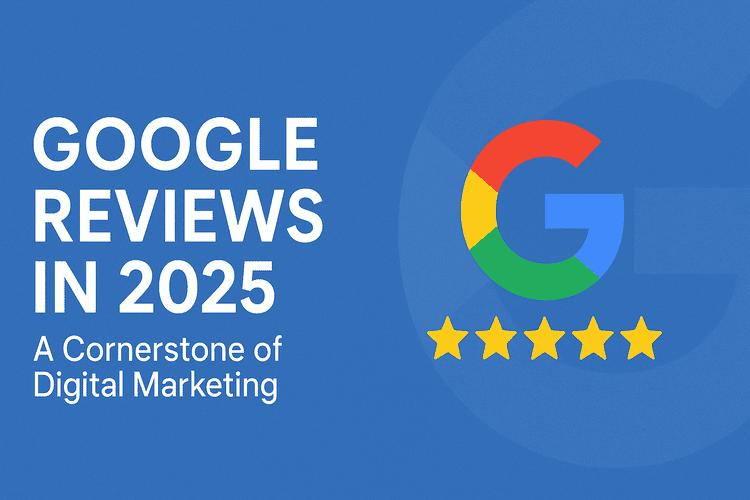Unlock Your Business Potential Mastering the Art of Getting More Reviews

In today's digital age, online reviews are crucial for business success. They influence customer decisions, build trust, and improve search engine rankings. This article delves into actionable strategies to get more reviews, enhance your online presence, and ultimately drive business growth. Master the art of review generation and unlock your business's full potential by understanding the power of customer feedback.
Table of Contents
- The Power of Online Reviews Why They Matter
- Understanding Your Audience What Platforms Do They Use
- Crafting the Perfect Ask Strategies for Requesting Reviews
- Leveraging Technology Automating the Review Request Process
- Responding to Reviews Turning Feedback into Opportunities
- Incentivizing Reviews Ethically and Effectively
- Promoting Your Reviews Showcasing Social Proof
- Monitoring and Analyzing Your Reputation Staying Ahead of the Curve
- Conclusions
The Power of Online Reviews Why They Matter
In today's digital marketplace, online reviews are more than just feedback; they are a vital currency that can significantly impact a business's success. Reviews play a pivotal role in shaping consumer perceptions, influencing purchasing decisions, and boosting a company's online visibility. Understanding the power of online reviews is essential for any business looking to thrive in a competitive environment.
One of the primary reasons online reviews matter is their direct impact on customer purchasing decisions. Potential customers often turn to reviews to gauge the quality and reliability of a product or service. According to studies, a significant percentage of consumers read online reviews before making a purchase, and their decisions are heavily influenced by the overall star rating and the sentiment expressed in the reviews. A higher star rating and positive reviews build trust and credibility, making customers more likely to choose that business over its competitors.
Furthermore, online reviews contribute significantly to search engine optimization (SEO). Search engines like Google consider the quantity, quality, and recency of online reviews when ranking businesses in local search results. Businesses with more positive reviews tend to rank higher, increasing their visibility to potential customers searching for relevant products or services. This enhanced visibility can translate into increased website traffic, leads, and ultimately, sales.
The concept of social proof also plays a crucial role. Social proof is the idea that people are more likely to trust and follow the actions of others. Online reviews serve as a form of social proof, validating the quality of a business and reassuring potential customers that they are making a sound decision. A business with numerous positive reviews signals that others have had positive experiences, making it more attractive to new customers.
Online reputation management is crucial in today's digital landscape. Monitoring and managing online reviews is essential for maintaining a positive brand image. Responding to reviews, both positive and negative, demonstrates that a business values customer feedback and is committed to providing excellent service. Addressing negative reviews promptly and professionally can turn a potentially damaging situation into an opportunity to showcase your dedication to customer satisfaction.
The impact of negative reviews can be substantial. Negative reviews can deter potential customers and damage a business's reputation. However, how a business responds to negative reviews can mitigate the damage and even turn the situation into a positive one. Addressing the concerns raised in negative reviews, offering solutions, and demonstrating a commitment to improvement can show potential customers that you are responsive and care about their experience.
Conversely, positive reviews can significantly boost a business's reputation and attract new customers. Highlighting positive reviews on your website and social media channels can reinforce the positive perception of your brand and encourage more customers to choose your business.
Online reviews also affect local search rankings. Local businesses rely on online reviews to increase their visibility in local search results. Google and other search engines use reviews as a factor in determining which businesses to display in response to local search queries. A strong review profile can help your business stand out from the competition and attract more local customers.
There are many review platforms such as Google Business Profile, Yelp, TripAdvisor, Facebook, and industry-specific sites.
Understanding Your Audience What Platforms Do They Use
Now that we understand the importance of online reviews, the next crucial step is to identify where your target audience is most active. Not all review platforms are created equal, and different industries and demographics gravitate towards different sites. Focusing your efforts on the platforms your customers use will yield the best results.
Several popular review platforms exist, each catering to specific industries and user preferences. Google Business Profile is a must-have for local businesses, as it directly impacts search rankings and provides a prominent space for customer reviews. Yelp is widely used for finding local businesses, particularly restaurants and service providers. TripAdvisor is the go-to platform for travelers seeking reviews of hotels, restaurants, and attractions. Facebook also hosts reviews, allowing customers to share their experiences directly on a business's page. Industry-specific sites, such as those focusing on healthcare or legal services, can also be valuable sources of reviews.
Determining which platforms your target audience uses requires research. Start by analyzing your existing customer base. Ask them directly which review sites they use and trust. You can include this question in customer surveys, feedback forms, or even informal conversations.
Next, research your competitors. Identify where they are receiving the most reviews and analyze the demographics of the reviewers. This can provide valuable insights into which platforms are popular among your target audience.
Monitoring online conversations is another effective method. Use social listening tools to track mentions of your brand and industry on various platforms. This can help you identify which review sites are generating the most buzz.
Understanding the demographics of each platform is also essential. For example, Yelp tends to attract a younger, more urban demographic, while Facebook has a broader user base. Consider the age, location, and interests of your target audience when choosing which platforms to focus on.
The mobile user experience of each platform is also a factor to consider. Many customers leave reviews on their smartphones, so ensure that the platforms you choose have a user-friendly mobile interface. A seamless mobile experience can encourage more customers to leave reviews.
Geographical variations in platform usage can also occur. Some platforms may be more popular in certain regions or countries. Research the local market to identify the most relevant review sites.
Tools like Google Analytics, Mention, and Brandwatch can help you monitor online conversations and identify relevant review sites. These tools track brand mentions, analyze sentiment, and provide insights into customer behavior.
By understanding your audience and focusing on the platforms they use, you can maximize the impact of your review generation efforts and build a stronger online reputation. This targeted approach ensures that your efforts are focused where they will be most effective.
Crafting the Perfect Ask Strategies for Requesting Reviews
Now that you know where your audience is, it's time to craft the perfect "ask." Requesting reviews is an art that requires careful consideration of timing, personalization, and ease of use. A well-executed review request can significantly increase the number of positive reviews you receive, while a poorly executed one can deter customers or even damage your reputation.
Timing is crucial. The best time to ask for a review is when the customer is most satisfied with their experience. This could be immediately after a purchase, after a successful service appointment, or after receiving positive feedback. Asking too soon may seem premature, while asking too late may result in the customer forgetting the details of their experience.
Personalization is equally important. Generic review requests can feel impersonal and may be ignored. Tailor your requests to the specific customer and their experience. Refer to their purchase or service, and mention any specific details that show you value their business.
\nMaking the review process easy and convenient is essential. Provide direct links to the review platforms you want customers to use. The fewer clicks required, the more likely they are to leave a review. Consider using QR codes that customers can scan with their smartphones to be taken directly to the review page.
Ethical considerations are paramount. Avoid incentivizing reviews in a way that could compromise their authenticity. Offering discounts or rewards in exchange for positive reviews is generally discouraged and may violate platform guidelines. Instead, focus on providing excellent service and making it easy for customers to share their honest opinions.
Here's an example of an email template for requesting reviews:
Subject Thank you for your recent purchase!
Dear [Customer Name],
Thank you for choosing [Your Business]. We hope you were satisfied with your recent purchase of [Product Name].
We would greatly appreciate it if you could take a few minutes to share your experience by leaving a review on [Review Platform Link]. Your feedback helps us improve our products and services and helps other customers make informed decisions.
Thank you for your support!
Sincerely,
The [Your Business] Team
Here's an example of an in-person script for requesting reviews:
"Hi [Customer Name], I'm glad you enjoyed your experience with us today. If you have a moment, we would really appreciate it if you could leave us a review online. It helps other people find us, and we really value your feedback."
Training your staff to ask for reviews politely and effectively is also crucial. Equip them with the knowledge and skills to identify satisfied customers and encourage them to leave reviews. Emphasize the importance of being genuine and respectful in their requests.
Consider the customer journey when determining the best time to ask for a review. If you have a multi-step process, such as an online purchase followed by delivery and installation, wait until the entire process is complete before asking for a review. This ensures that the customer has a comprehensive understanding of their experience.
Leveraging Technology Automating the Review Request Process
While personalized requests are effective, manually sending review requests can be time-consuming, especially for businesses with a large customer base. Leveraging technology to automate the review request process can save time and ensure that every customer has the opportunity to leave feedback.
Several tools and software platforms are designed to automate the review request process. These platforms integrate with your customer relationship management (CRM) system and automatically send review requests to customers based on pre-defined triggers, such as after a purchase or service completion.
Integrating review requests into your CRM system allows you to personalize the timing and content of your requests based on customer data. For example, you can send different review requests to customers who purchased different products or received different services. This level of personalization can significantly increase the effectiveness of your review campaigns.
Automated email sequences and SMS messaging are powerful tools for review generation. You can set up a series of emails or text messages that are automatically sent to customers at specific intervals after a trigger event. These sequences can include reminders, follow-ups, and personalized messages that encourage customers to leave reviews.
Many review management platforms offer a range of features, including automated review requests, review monitoring, and reputation management. Some popular platforms include Birdeye, Podium, and ReviewTrackers. Compare and contrast the features of different platforms to find the one that best meets your needs.
Setting up an automated review request system involves several steps. First, choose a review management platform that integrates with your CRM system. Next, define the triggers that will initiate the review request process. Then, create personalized email or SMS templates that will be sent to customers. Finally, configure the automated sequence and test it thoroughly to ensure that it is working correctly.
Personalizing automated review requests for different customer segments is crucial for maximizing their effectiveness. Use customer data to tailor the content of your requests to the specific interests and needs of each segment. For example, you can include product recommendations or service offers that are relevant to their past purchases.
Legal considerations are also important. Ensure that your automated review requests comply with the CAN-SPAM Act and other relevant regulations. This includes providing an opt-out option and avoiding deceptive subject lines.
Tracking the performance of your automated review campaigns is essential for optimizing their effectiveness. Monitor key metrics such as open rates, click-through rates, and review conversion rates. Use this data to identify areas for improvement and refine your campaigns over time. A/B testing different email templates and subject lines can help you optimize your results.
Responding to Reviews Turning Feedback into Opportunities
Once the reviews start rolling in, your job isn't done. Responding to reviews, both positive and negative, is crucial for showcasing your commitment to customer satisfaction and turning feedback into opportunities for improvement. Ignoring reviews can give the impression that you don't care about your customers' experiences, while a thoughtful response can build loyalty and attract new business.
Promptness is key. Aim to respond to reviews within 24-48 hours. This shows customers that you are attentive and value their feedback. Acknowledge the reviewer by name and thank them for taking the time to share their experience.
Crafting effective responses involves several key elements. For positive reviews, express your gratitude and highlight specific aspects of their experience that they enjoyed. For negative reviews, acknowledge their concerns, apologize for any shortcomings, and offer a solution.
Turning negative feedback into opportunities for improvement is essential. Analyze the feedback to identify areas where your business can improve its products, services, or processes. Use this feedback to make meaningful changes that enhance the customer experience.
Here's an example of a well-crafted response to a positive review:
"Dear [Reviewer Name],
Thank you so much for your positive review! We're thrilled to hear that you enjoyed our [Product/Service]. We appreciate you taking the time to share your experience. We look forward to serving you again soon!"
Here's an example of a well-crafted response to a negative review:
"Dear [Reviewer Name],
Thank you for bringing this to our attention. We sincerely apologize that your experience did not meet your expectations. We value your feedback and will use it to improve our [Product/Service]. Please contact us directly at [Phone Number] or [Email Address] so we can discuss this further and find a resolution."
A process for monitoring and managing online reviews is essential. Use review management tools to track new reviews and set up alerts so you can respond promptly. Assign responsibility for review monitoring and response to a specific team member or department.
For complex customer issues that arise from reviews, escalate the issue to the appropriate team member or manager. Ensure that the customer is contacted directly to resolve the issue to their satisfaction.
Involving different team members in the review response process can provide valuable insights and perspectives. Encourage team members from different departments to contribute to the response process, as they may have unique knowledge or expertise that can help resolve customer issues.
Use customer feedback to improve your products, services, and processes. Regularly analyze review data to identify trends and patterns. Use this data to make informed decisions about how to improve the customer experience.
Promoting Your Reviews Showcasing Social Proof
You've diligently collected positive reviews; now it's time to showcase them! Promoting your reviews effectively amplifies their impact, builds trust with potential customers, and ultimately drives sales. Social proof, in the form of positive reviews, is a powerful marketing tool that can significantly influence purchasing decisions.
One of the most effective ways to promote your reviews is on your website. Embed reviews directly onto relevant pages, such as product pages, landing pages, and your homepage. Create visually appealing review displays that are easy to read and navigate. Use a variety of formats, such as text excerpts, star ratings, and even video testimonials.
Review widgets and badges are another great way to showcase your positive reviews. These widgets display your average rating and a selection of recent reviews, providing instant social proof to website visitors. Many review platforms offer widgets and badges that can be easily integrated into your website.
Incorporate reviews into your advertising campaigns to boost their effectiveness. Include review excerpts or star ratings in your ads to highlight the positive experiences of your customers. This can help to increase click-through rates and conversions. For social media ads, consider using video testimonials or creating graphics that feature positive review quotes.
Creating case studies and testimonials based on positive reviews is a powerful way to showcase the benefits of your products or services. Select compelling reviews that highlight specific results or outcomes. Develop in-depth case studies that explore the customer's journey and demonstrate how your business helped them achieve their goals. Video testimonials are particularly effective, as they allow potential customers to see and hear directly from satisfied customers.
Leverage reviews to build trust and credibility with potential customers. Highlight your positive reviews in your marketing materials, such as brochures, flyers, and email newsletters. Share your reviews on social media channels and encourage your followers to engage with them. Respond to comments and questions about your reviews to show that you are responsive and engaged.
Obtaining customer consent before using their reviews for promotional purposes is essential. Always ask for permission before using a customer's review in your marketing materials. This demonstrates respect for their privacy and ensures that you are complying with data protection regulations.
Monitoring the impact of review promotion on sales and conversions is crucial for measuring its effectiveness. Track key metrics such as website traffic, click-through rates, conversion rates, and sales revenue. Use this data to analyze the impact of your review promotion efforts and make adjustments as needed. Consider A/B testing different review promotion strategies to identify what works best for your business.
Monitoring and Analyzing Your Reputation Staying Ahead of the Curve
Securing and promoting positive reviews are not one-time tasks. Continuously monitoring your online reputation and analyzing review data is essential for staying ahead of the curve and ensuring long-term success. A proactive approach to reputation management allows you to identify potential threats, address customer concerns, and continuously improve your business.
Key metrics to track include review volume, rating score (average star rating), and sentiment analysis. Review volume indicates how actively customers are engaging with your business online. Your rating score provides an overall assessment of customer satisfaction. Sentiment analysis reveals the emotional tone of reviews, helping you understand customer perceptions and identify areas of strength and weakness.
Tools and techniques for monitoring online mentions include Google Alerts, social media monitoring platforms (e.g., Hootsuite, Brandwatch), and review management platforms (e.g., Birdeye, Podium). These tools allow you to track mentions of your brand, products, and services across the web, including social media, forums, blogs, and review sites. Identifying potential reputation threats early on allows you to take proactive steps to address them before they escalate.
Creating a reputation management plan involves defining your goals, identifying your target audience, establishing monitoring procedures, developing response protocols, and outlining crisis management strategies. Your plan should be tailored to your specific business and industry.
Use review data to identify areas for improvement and track progress over time. Analyze review data to identify trends and patterns in customer feedback. Use this data to prioritize improvements to your products, services, or processes. Track your progress over time to ensure that your efforts are having a positive impact on customer satisfaction and your online reputation.
Sentiment analysis can help you understand customer perceptions and identify underlying emotions that may not be explicitly stated in reviews. Sentiment analysis tools use natural language processing to analyze the text of reviews and determine whether the sentiment is positive, negative, or neutral. This information can be used to identify areas where customers are particularly satisfied or dissatisfied.
Proactively address negative feedback to prevent reputation crises. Respond to negative reviews promptly and professionally, acknowledging the customer's concerns and offering a solution. Take steps to address the underlying issues that led to the negative feedback. By demonstrating a commitment to customer satisfaction, you can turn negative experiences into positive ones and prevent potential reputation crises.
Adapting your reputation management strategies based on changes in the online landscape is essential. The online world is constantly evolving, with new platforms and technologies emerging all the time. Stay informed about these changes and adapt your strategies accordingly. Monitor your reputation across all relevant channels and be prepared to respond to new challenges as they arise.
Conclusions
Mastering the art of getting more reviews is an ongoing process that requires a proactive and strategic approach. By understanding the power of online reviews, identifying the right platforms, crafting effective requests, and responding to feedback, you can build a strong online reputation that attracts more customers. Embrace these strategies, monitor your progress, and adapt to the ever-changing digital landscape to unlock your business's full potential and achieve lasting success.


